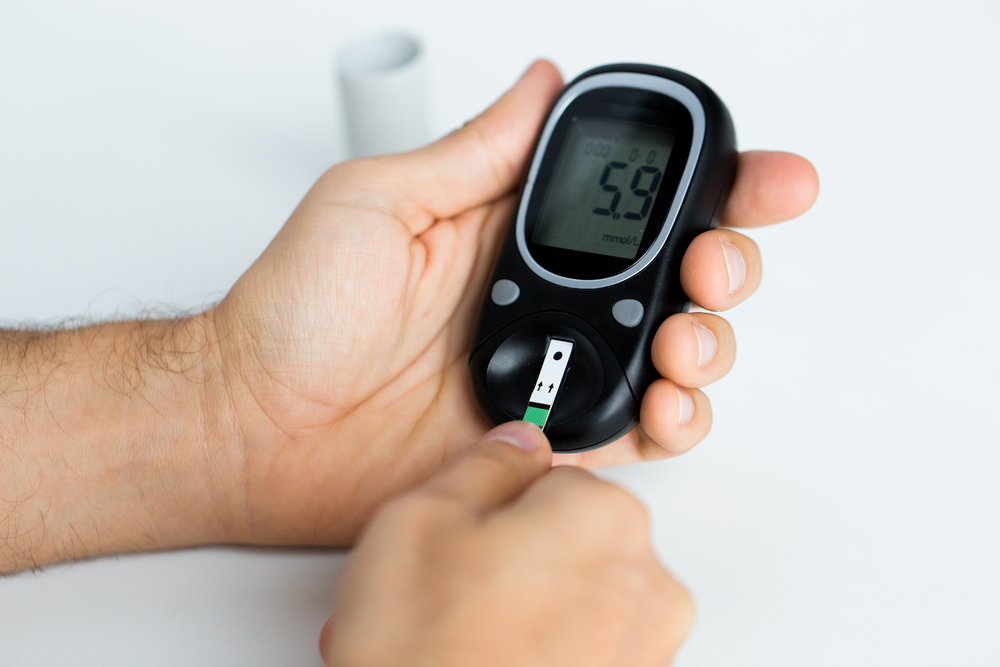Type-2 Diabetes – Symptoms, Causes, Diagnosis, Treatment, and Everything else

Overview
Type-2 Diabetes is a lifestyle disease that is quickly prevailing across India owing to the sedentary habits of people. With over 77 million diabetes patients, India is right behind China in the list of countries having the most number of diabetes patients around the world. India is home to one in six diabetes patients around the world, which means that about 17 percent of diabetics in the world are from India. Being incurable, the disease is a really serious problem that has to be addressed very cautiously to lead a healthy life.

What is Type-2 Diabetes?
A person’s body becomes insulin resistant in Type-2 diabetes, making the body incapable of using the insulin in the manner it used to.
Not taking proper precautions can lead to high blood glucose levels and could also lead to life-threatening complications.
Not only Type-2 diabetes affects middle-aged and older people but also children, especially teens owing to childhood obesity. Earlier, it used to be called adult-onset diabetes, but in recent years, there have been plenty of cases of type-2 diabetes in children and teens.
Signs and Symptoms of Type-2 Diabetes
Because the patient’s body is unable to produce insulin, it causes the body to rely on alternative energy to bring glucose to the organs and muscles. This change causes various symptoms to develop in the body.
Sometimes, these symptoms are so mild and easy to dismiss that a person does not notice them. Some of the symptoms are mentioned below:
- Loss of weight
- Thirst
- Peeing a lot
- Blurred vision
- Weakness
- Crankiness
- Numbness in hands and legs
- Fatigue
- Yeast infection on a regular basis
Note:- If you witness dark rashes around your neck or armpits, it is advised to visit your doctor immediately. This sign means that your body is starting to resist insulin.
Causes of Type-2 Diabetes
Pancreases help in making a hormone called insulin which helps in turning cells into glucose.
Initially, the patient’s pancreas starts producing more insulin in a bid to get glucose inside your cells. It, however, fails to do so and the extra glucose ends up in the blood of the patient instead.
The following could be causes of Type-2 disease:
- Increase in Weight: Overweight can make your body become insulin resistant, especially if you are a middle-aged person.
- Genes: According to some types of research, it is found that DNA affects how your body produces insulin.
- Metabolic syndrome: Patients who are insulin resistant often suffer from conditions including:
- High blood sugar
- Extra fat
- High BP
- High cholesterol
- Excessive glucose from the Liver: In case when a person’s blood sugar is low, the liver makes it and releases it. As a result, when the person consumes food, the blood sugar levels go up and the liver then slows down the release and stores it for later. But in many cases, the liver does not break down the glucose leading to high blood sugar.
- Lack of communication between cells: In some cases, cells share the wrong amount of insulin or they do not receive the messages correctly. This bad communication and a chain reaction leading to high blood sugar levels.
Risk Factors
Some of the risk factors include:
- Age factor, the risk is higher when you are above 45 years of age
- Family: If your brother, sister, father or mother is suffering from diabetes, then there is a chance of you getting Type-2 Diabetes
- Prediabetes
- Heart and blood vessel disease
- High blood pressure
- Low good cholesterol
- Overweight
- Depression
- Gestational diabetes
- PCOS
- No exercise at all
- Excessive smoking
- Irregular sleep pattern
- Stress
Diagnosis and Tests
It is advised to see a doctor if you see any of the symptoms of diabetes. Usually, the doctor asks you to give your blood samples to get tested for Type-2 diabetes. In case your blood glucose level is very high, there are chances that your doctor might ask you to perform the tests mentioned below:
- A1c: Also known as HbA1c Test, it measures average blood glucose levels over the past 2 or 3 months.
- Fasting Plasma Glucose: It is also known as the fasting blood sugar test. You may need to fast for eight hours before having it performed.
- Oral glucose tolerance test (OGTT): In this test, the doctor tries to find out your blood glucose level before and after two hours you had some sweet drink. This test helps the doctors in determining how the body deals with sugar.
Treatment
It is a well-known fact that diabetes is an incurable disease. It, however, can be managed effectively with some lifestyle changes medications.
Mentioned below are the lifestyle changes you may require to keep it under control –
Lifestyle changes
Making some dietary changes and doing regular exercises have been recognised as the best way to keep the blood sugar levels under control.
Weight loss
Losing some extra weight can be of great help in managing diabetes. Losing 5 per cent of the bodyweight is considered a good achievement. However, losing at least 7 per cent and maintaining it is the ideal amount of weight loss.
This means that if someone weighs around 180 pounds (81.65 kgs), they just need to lose about 13 pounds (5.90 kgs) to keep their blood sugar levels under control.
The weight loss process can be overwhelming at times but the best way to achieve it is by controlling your portion intake and eating healthy foods.
Healthy Eating
There isn’t a particular diet for every type-2 diabetes patient. Patients have to change their diet as per their requirements. A qualified dietitian can help you prepare a meal plan as per your needs, and you just have to stick with it to keep the blood sugar levels in control. The dietitian will just ask you to focus on the following things –
- Consuming fewer calories
- Avoiding refined carbs, especially sweets
- Including fresh vegetables and fruits in your daily diet
- Having fibre-rich foods
Exercise
The doctors recommend 30-60 minute of physical activity to every type-2 diabetes patient on a daily basis. These activities may include –
- Walking
- Cycling
- Swimming
- Any physical activity that increases your heart rate
These activities should be coupled with strength training, like yoga or weight lifting. If you have already been put on some kind of medication to lower your blood sugar, you may need a snack right before going for a workout.
You have to keep checking your blood sugar levels quite often to ensure it doesn’t get out of hand. Your doctor will determine how often you may have to check your blood sugar levels. He will decide it on the basis of the treatment you are being given.
Summary
Type-2 diabetes can be managed effectively, but only with complete dedication and hard work. Bringing some lifestyle changes like weight loss, healthy eating and exercising, you can keep it under control. You should talk to a doctor to analyse your condition better and suggest you the best possible mode of treatment.
Medication
Depending upon how your body is responding to the lifestyle changes, your doctor may suggest you some medications to keep the blood sugar levels in check. Some of the most common type-2 diabetes medications are:
- Metformin (Fortamet, Glucophage, Glumetza, Riomet)
- Sulfonylureas
- Meglitinides
- Thiazolidinediones
- DPP-4 inhibitors
- GLP-1 receptor agonists
- SGLT2 inhibitors
- Insulin
There is a slight possibility that even after making the suggested lifestyle changes and taking prescribed medication, your blood sugar levels do not stay in control. It is no way means that you are doing anything wrong. Diabetes is a progressive disease and in some cases, patients need to take more than one drug to control their blood glucose levels.
When a doctor is giving you more than one medication at a time, it is called combination therapy. You are required to work with your doctor to find out the best combination of medications for you.
Note – The medications mentioned above are for different purposes and should only be taken after proper consultation with a doctor.
Summary
Along with lifestyle changes, patients may need to have certain medications to keep their blood sugar levels in check. Hence, keeping in touch with a doctor is highly recommended when you are suffering from type-2 diabetes.
Type-2 Diabetes Prevention
Diabetes is becoming more common in India with each passing day. Hence, to prevent it, you might need to adopt some lifestyle changes. These changes include –
- Weight loss – Losing 7-10 per cent of your weight might help you in cutting down the chances of suffering from type-2 diabetes in half.
- Stay active – Staying active or brisk walking at least 30 minutes a day can cut down your chances of getting ill at least by a third.
- Right eating habits – Avoiding processed carbs, sugary drinks and saturated and trans fats can help you immensely. Limiting the consumption of red and processed meats also helps.
- Quit smoking – You should stop smoking immediately, and once you stop, you should work with your doctor to keep yourself from putting on weight which is a very common occurrence after quitting smoking.
Type-2 Diabetes Complications
With time, diabetes or high blood sugar levels can potentially damage and lead to problems like –
- Heart and blood vessels – Type-2 Diabetes increases your risk of suffering from heart disease or a stroke by five times. You may also suffer from blocked blood vessels and chest pain.
- Kidneys – Diabetes also damages your kidneys which may even lead to kidney failure. Hence, you may require dialysis or a kidney replacement.
- Eyes – High blood sugar can also deteriorate the tiny blood vessels in your eyes. This condition is called retinopathy. This problem, if not treated in time, can lead to blindness.
- Nerves – This can affect your digestion, the feeling in your feet, and your sexual prowess.
- Skin – As this disease hinders the blood circulation in your body, wound healing becomes slower and can also cause infection.
- Pregnancy – Diabetes also increases the risk of miscarriage in pregnant women. It also increases the chances of stillbirth or a baby with a birth defect.
- Sleep – Type-2 diabetes may cause sleep apnea, a condition in which the breathing stops and starts in a patient when he/she is asleep.
- Hearing – High blood sugar levels also cause hearing problems in some patients. It, however, is yet to be proven scientifically but many experts have observed this problem in patients.
- Brain – Type-2 diabetes also damages your brain and increases the risk of Alzheimer’s disease.
- Depression – Diabetes also doubles the risk of developing depression.
The best and the only way to prevent these complications is by managing your blood sugar levels well.
Summary
Type-2 diabetes can cause plenty of complications, and the only way to prevent these life-threatening and disabling complications is to maintain your blood sugar levels as nicely as possible.
Also Read: The Dangers of Weight Loss Shortcuts
Takeaway
Type-2 diabetes is a lifelong disease that needs proper care and precautions to ensure a healthy life ahead. Patients are advised to stay in touch with their doctors and keep checking their blood sugar levels as often as recommended.



